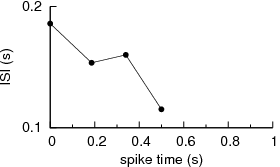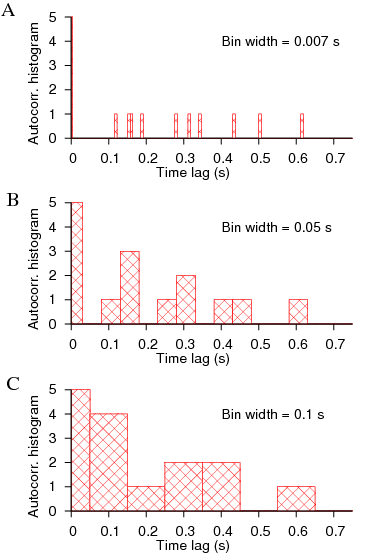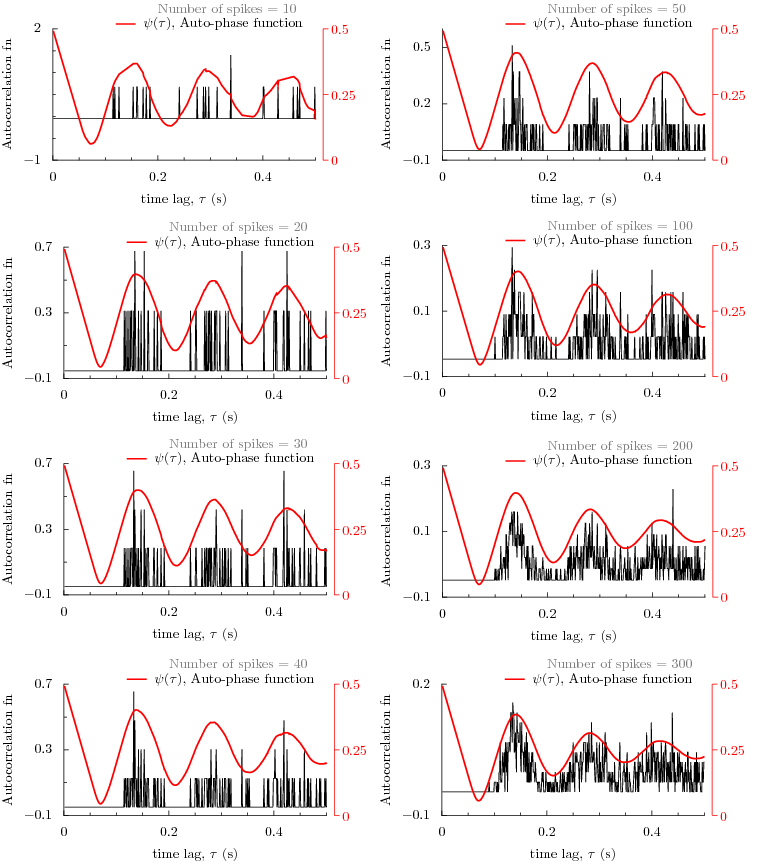|

|
"Get me more data, will you?" shouted Jay, the experimenter sitting at the computer impatiently, obviously frustrated and disoriented at the
Ray is a modeler and computational data analyst who is interested in finding frequencies and varying time scales in the
The two case scenarios described above are rampant in experimental and computational data analysis. More often than not, the data is non-stationary, and equally often the data set is too short (fewer points) for analysis. The problems are compounded by the requirement of an appropriate bin width for correlation functions, and data in multiples of an integer for other spectral analyses. There perhaps is no single silver bullet for all the problems faced while analyzing such
Simply put, the correlation functions assume stationarity of the data, and changes in frequency in the data or patterns of irregularity would be glossed over when lot of data points are included in the computation. One could work with brief data in an attempt to overcome the problems with non-stationarity, but one faces the problem of bin width that alters the computation giving inconsistant picture. For example, let us consider
|

|

After having to stare at such non-stationary data for months, it was clear to us that a new method was needed to address such data. It could do averaging, but cannot rely on including large number of data points. On closer examination of the mutual relationship between any two given spike sequences, the concept that emerged as the powerful was idea of relative time shifts between the spike trains. It is similar to that used in computing correlation functions, but not the same. Every time there is a spike event, that neuron is affecting the other neuron (against which we seek correlations) in some direct way, so that that frozen frame of relative time shifts between the spike trains must contribute to determine the mutual correlations. Assumption of a causal relationship between the spike trains is implicit in computing the correlations. Such frozen frames can be constructed by time shifting one spike sequence against the other. In each such frame, the information is contained in the relative time shifts (with respect each neuron's oscillation period at that time). This set of relative time shifts (which we call phase pairs) may live in a high dimensional space which might need separate tools to deal with. But as a first order attempt, we can look at them in a two dimensional space, and examine whether we can extract the component that is most suitable for describing correlations and deliniate it from that describing just the dissimilarity between them. The figure (a) below shows the method of constructing the phase pairs (gamma, delta) between two spike trains.

In the figure (b) above we have transformed these pairs onto a two-dimensional phase plane whose
axes are normalized phases representing period of each neuron.
This projection onto two dimensional plane may have cost us some valuable information that is hidden
in these phase pairs, but this is the simplest
transformation that helps us in identifying the component that represents the
effective "drift" vs. effective "diffusion" between the spike trains. The point P
represents the average point of the phase pairs, and Q is a typical point. The component
c_i represents the "drift" of the point Q from the mean position P. The component
d_i represents "diffusion" which we are not concerned here. An examination of each of the
expressions for c_i and d_i would make this terminology more clear. Our phase function is simply
quantificatiokn of these drift terms c_i. We take the avearage of the absolute values of c_i
and normalize the result with the maximum value any c_i can ever attain.
A simile might help in appreciating this term better.
Imagine the phase pairs as a swarm of bees around
a beehive located on the branch of a tree. The drift experienced by each bee is
the absolute (outward or inward) distance along the branch they find themselves
with respect to the center of the beehive. The phase function is now
proportional to the mean of all those drifts normalized with the maximum such
value a phase pair can ever assume.
We now test this definition and compute it between a spike train and a time shifted copy of itself, i.e. an auto-phase function similar to an autocorrelation function. Our data is, of course, very short. It consists of a meager 7 spike times or less. We show the auto-phase function below in figure (b) for data points 3, 4, 5, 6, and 7, and a corresponding autocorrelation function (ACF) histogram for 7 data points in figure (c). The reults of the auto-phase function are stunning. The phase function could detect the periodicity even in 4 spike times. There is no smoothing we have employed other than the average that is already built into the definition of the phase function. On the otherhand, the autocorrelation function is not yet well formed for 7 data points; It would take some massaging of the output profile in order to clearly see the underlying periodicity.

How does the phase function compare with correlation function for large number of data points?
The following figure displays a comparison between the auto-phase function and autocorrelation function
for different number of data points from 10 to 300. As the number of points is increased, we see that the
auto-phase function predicts the same periodicity as that of autocorrelation function.

Or examine the results in the following figure by interacting with it. The data set contains 673 data points from a recording of 100 seconds of a globus pallidus neuron of rat brain slice. By choosing a number, a figure is displayed that has autocorrelation function and phase function already computed and plotted. As the number of data points is increased, we begin to see that the autophase function predicts exactly the same periodicity as the autocorrelation function.
Fri Aug 5 17:41:28 CDT 2011 ~ ramana dodla ~ username:ramana.dodla domain:gmail.com